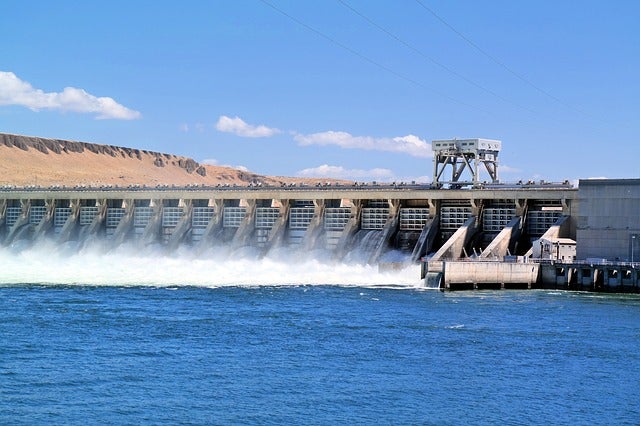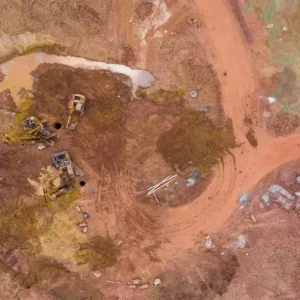
NS Energy profiles the largest hydropower companies based on their installed capacities in 2018
China Yangtze Power Co – 45.4GW
China Yangtze Power, a state-owned utility based in Beijing, has 82 hydropower generating units, of which, 58 have a capacity of 700MW or more.
China Yangtze Power is the owner of the Three Gorges Project, which is located along the Yangtze River. At 22.5GW, the Three Gorges project is not only the world’s biggest hydropower generation facility, but also the biggest power station in the world. The Three Gorges Project has a total of 34 turbines (32x700MW and 2x50MW).
China Yangtze Power also operates the 13.86GW Xiluodu hydroelectric power plant along the Lower Jinsha River, which was inaugurated in 2013, and the 6.4GW Xiangjiaba hydropower plant along the Jinsha River, which commenced operations in 2012.
China Yangtze Power is set to expand its hydropower generation capacity through the upcoming projects along the Jinsha River – the 16GW Baihetan hydropower project to be commissioned in 2022 and the 10.2GW Wudongde hydropower project, which is scheduled to begin power generation in 2020.

Centrais Eletricas Brasileiras – 44.2GW
Brazilian state-owned Centrais Eletricas Brasileiras (Eletrobras) operates 48 hydroelectric power plants located across Brazil.
The major hydropower projects operated by Eletrobras are the 8.3GW Tucurui plant in Para, the 2.12GW Itumbiara hydropower project in Goias, and the 1.82GW Teles Pires hydropower project in Mato Grosso.
Built along the Tocantins River, the Tucurui hydropower plant generates power using 25 turbines. It was the first large-scale hydroelectric project built in the Brazilian Amazon rainforest and has been generating power since 1984.
Eletrobras’ hydroelectric plants are spread throughout the Brazilian regions with the biggest by capacity located along the São Francisco, Tocantins, Paraná, Paraíba do Sul, and Grande rivers.
The company is set to grow its hydro generation capacity further by bringing the 11.2GW Belo Monte hydropower plant along the Xingu River in Para State into full operation this year. Belo Monte is expected to become the world’s third largest hydroelectric plant by capacity, once completed.
Hydro-Quebec – 36.7GW
Owned by the Government of Quebec, Hydro-Québec has an installed hydropower capacity of 36,767MW generated from 63 hydroelectric stations across the Canadian state. A dozen of them have a capacity of more than 1GW.
The largest hydropower project in Hydro-Québec’s portfolio is the 5.6GW Robert-Bourassa generating station built along the La Grande River. Previously called La Grande-2, the hydropower project is installed with 16 turbines of 351MW each.
Construction on the Robert-Bourassa generating station began in 1974 and first power was generated in 1979. The development was part of the James Bay Project, which is a series of hydroelectric power stations constructed along the La Grande River by Hydro-Québec with a collective generation capacity of 16.5GW. The hydroelectric system is planned to be expanded to 27GW in future.
The 2.8GW La Grande-4 hydroproject, the 2.4GW La Grande-3 generating station, and the 2GW La Grande-2-A plant are some of the other facilities that are part of the James Bay Project.

RusHydro – 27.6GW
RusHydro is a Russian hydroelectricity company with a total production capacity of 98,432GWh from its hydropower and pumped storage plants in 2018. RusHydro is 60.56% owned by the Russian Federation, while the rest is held by other institutional and individual shareholders.
The firm, in 50-50 joint venture with UC RUSAL, operates the 3GW Boguchanskaya hydropower plant (HPP) in Russia.
The other major power plants owned by RusHydro include the 1,330MW Zeiskaya HPP, which is claimed to be the first large-scale hydro-power plant in the Russian Far East, the 2,010MW Bureiskaya HPP, the 475MW Novosibirsk HPP, and tens of HPPs in the North Caucasus. It also owns the 561MW Sevan-Razdan Cascade hydro power plant in Armenia.
In June 2019, RusHydro commenced construction of two small hydropower plants, Krasnogorskaya-1 and Krasnogorskaya-2, on Kuban river in the Karachay-Cherkessia Republic.
Planned to be commissioned in 2021-22, the two hydro power plants will have an installed capacity of 24.9MW and an annual output of 83.8GWh.
Electricite de France (EDF) – 22.7GW
Electricite de France (EDF) is a French electric utility that generates electricity from various sources such as nuclear, solar, wind, hydro, coal, gas, and others.
Hydropower accounted for 17% of the company’s total power generation capacity in 2018. The firm operates 433 hydroelectric plants in France and generated 20.6GW in 2018. EDF has 1GW of installed hydro capacity in Italy.
EDF owns 40% of Nam Theun 2 Power Company (NTPC), which owns the 1,070MW Nam Theun 2 hydropower complex. The project represents approximately 18% of Laos’ installed capacity.
EDF is also developing a 408MW hydropower facility named Sinop in the Brazilian state of Mato Grosso. The €880m (£790m) project is planned to be commissioned in the second half of 2019.
Further, the firm is developing a 420MW hydroelectric dam named Nachtigal in Cameroon. The €1.2bn (£1.08bn) run-of-the-river hydropower plant is scheduled to be commissioned in 2023.






